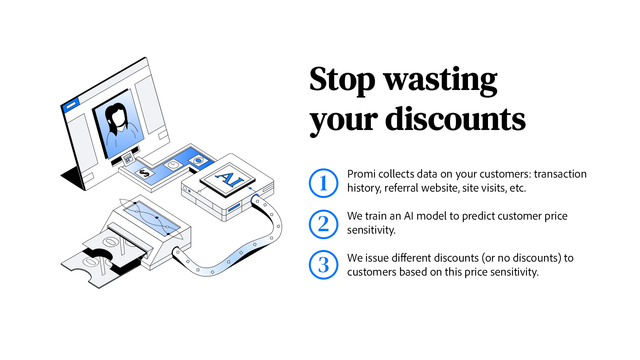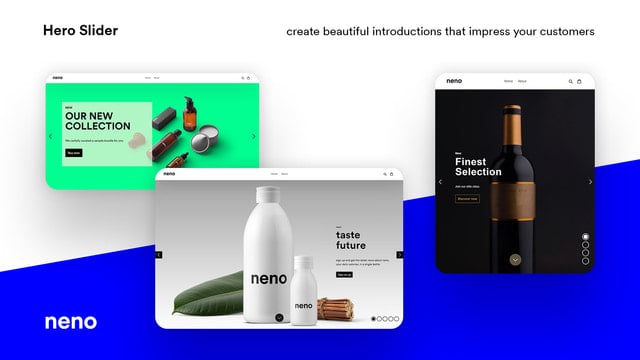In today's digital age, having a strong online presence is crucial for the growth and success of any business. This is particularly true for online stores, where the competition is fierce and consumer expectations are constantly evolving. To ensure your online store thrives in this dynamic landscape, it's essential to have effective growth strategies in place. In this article, we will explore key strategies that can help your online store not only stay competitive but also achieve substantial growth.
Understanding the Basics of Online Store Growth
Before diving into specific growth strategies, it's important to understand the significance of having a solid growth strategy in the first place. A well-defined growth strategy serves as a roadmap, guiding you through every stage of your online store's development. It helps you identify key goals and objectives, align your resources effectively, and make informed decisions to drive growth.
Expanding on the concept of a growth strategy, it's crucial to recognize that it not only provides a roadmap but also acts as a framework for adapting to changing market dynamics. As the e-commerce landscape evolves, having a flexible growth strategy allows you to pivot and adjust your approach in response to new trends and consumer preferences. This adaptability is key to sustaining long-term growth and relevance in the competitive online marketplace.
The Importance of a Solid Growth Strategy
A solid growth strategy provides direction and focus, allowing you to prioritize your efforts and allocate resources wisely. Without a clear growth strategy, your online store may struggle to differentiate itself from competitors, reach its target audience, and generate sustainable revenue. By having a well-crafted growth strategy, you can ensure that your online store is on a path to success.
Furthermore, a robust growth strategy not only outlines your objectives and tactics but also serves as a tool for measuring success and performance. By setting key performance indicators (KPIs) and regularly tracking and analyzing your store's growth metrics, you can identify areas of improvement, capitalize on strengths, and optimize your strategies for maximum impact.
Key Factors Influencing Online Store Growth
Several factors can influence the growth of your online store. These factors include market demand, customer behavior, competitive landscape, and technological advancements. Understanding these factors and incorporating them into your growth strategy can help you make informed decisions and stay ahead of the curve.
Delving deeper into these key factors, it's essential to recognize the interconnected nature of market demand and customer behavior. By closely monitoring market trends, consumer preferences, and purchasing patterns, you can tailor your product offerings, marketing strategies, and customer experience to meet evolving demands effectively. Additionally, keeping a pulse on technological advancements enables you to leverage innovative tools and platforms to enhance your online store's performance and stay competitive in the digital realm.
Building a Strong Online Presence
A strong online presence forms the cornerstone of any successful online store. It ensures that your store is easily discoverable, engages customers effectively, and builds trust and credibility. Here are two key strategies to consider for building a strong online presence:
Establishing a Consistent Brand Identity
One crucial aspect of building a strong online presence is establishing a consistent brand identity across all digital platforms. Your brand identity includes elements such as your logo, color scheme, typography, and tone of voice. Consistency in these elements helps customers recognize and remember your brand, fostering trust and loyalty. Make sure to maintain a cohesive brand image in your website design, social media profiles, email communications, and any other online touchpoints.
SEO Optimization for Online Stores
Search Engine Optimization (SEO) is crucial for improving the visibility of your online store in search engine results pages. By optimizing your website's content, structure, and technical aspects for relevant keywords, you can attract organic traffic and increase your chances of converting visitors into customers.
Leveraging Social Media for Business Growth
Social media platforms have become powerful marketing tools for online stores. By creating compelling content, engaging with your target audience, and utilizing paid advertising features, you can leverage social media to build brand awareness, drive traffic to your website, and ultimately boost sales.
Collaborating with Influencers for Increased Reach
Influencer marketing has emerged as a popular strategy for online stores looking to expand their reach and connect with new audiences. By partnering with influencers who align with your brand values and target demographic, you can tap into their existing follower base and leverage their credibility to promote your products or services. When executed effectively, influencer collaborations can generate buzz, drive traffic, and result in increased sales for your online store.
Enhancing User Experience
User experience plays a vital role in the success of your online store. A seamless and intuitive user experience not only encourages customers to explore and make purchases but also leads to repeat business and positive reviews. To enhance user experience, consider the following strategies:
Importance of Website Design and Navigation
A visually appealing website with intuitive navigation is crucial for engaging visitors and encouraging them to stay longer on your site. Invest in a user-friendly design and ensure that your website is mobile-responsive to cater to the increasing number of shoppers using mobile devices.
Furthermore, incorporating interactive elements such as hover effects, animated transitions, and personalized product recommendations can captivate visitors' attention and create a more dynamic browsing experience. Implementing a clear call-to-action buttons and strategically placing them throughout the website can guide users towards desired actions, ultimately enhancing user engagement and conversion rates.
Streamlining the Checkout Process
A complicated and time-consuming checkout process is a major turn-off for customers. Simplify the payment process by offering multiple payment options, guest checkout, and a clear and concise checkout form. Minimizing friction during the checkout process can significantly improve conversion rates and customer satisfaction.
Moreover, integrating a progress indicator bar during the checkout process can provide users with a clear understanding of their current position and the steps remaining, reducing anxiety and increasing completion rates. Offering an option for users to save their cart for later or providing real-time shipping cost calculations can further streamline the checkout process, enhancing convenience and reducing cart abandonment rates.
Utilizing Email Marketing
Email marketing remains one of the most effective and cost-efficient strategies for online stores. It allows you to nurture customer relationships, promote products, and drive repeat purchases. To make the most of email marketing, consider the following strategies:
Building an Effective Email List
Start by building a targeted and permission-based email list. Offer incentives such as exclusive discounts or valuable content in exchange for email sign-ups. Segment your list based on customer preferences and behaviors to deliver personalized and relevant email campaigns.
Additionally, consider implementing a double opt-in process to ensure that your subscribers are genuinely interested in receiving your emails. This extra step can help improve the quality of your email list and reduce the likelihood of being marked as spam.
Crafting Engaging Email Content
The key to success in email marketing lies in delivering valuable and engaging content to your subscribers. Create compelling email campaigns, including promotional offers, educational content, and personalized recommendations. Use eye-catching visuals, persuasive copy, and strong calls-to-action to drive engagement and conversions.
Furthermore, A/B testing different elements of your emails, such as subject lines, images, and CTAs, can provide valuable insights into what resonates best with your audience. By continuously optimizing your email content based on data-driven results, you can enhance the effectiveness of your campaigns and ultimately drive better results.
Implementing Affiliate and Referral Programs
Affiliate marketing and referral programs are excellent strategies to expand your reach, gain new customers, and increase sales. Consider the following strategies to implement these programs effectively:
Benefits of Affiliate Marketing
Affiliate marketing allows you to collaborate with influencers or other websites to promote your products. By offering them a commission for each sale they generate, you incentivize them to drive traffic and conversions to your online store. This cost-effective strategy can significantly expand your customer base and boost sales.
One key advantage of affiliate marketing is the ability to tap into niche markets that you may not have access to otherwise. By partnering with influencers or websites that cater to specific audiences, you can reach potential customers who are already interested in your products or services. This targeted approach can lead to higher conversion rates and a more engaged customer base.
Setting Up a Successful Referral Program
A referral program encourages existing customers to refer your online store to their friends and family in exchange for rewards. By leveraging the power of word-of-mouth marketing, you can tap into a new customer base and benefit from the trust and credibility associated with referrals.
When designing a referral program, it's important to make the process simple and rewarding for your existing customers. Offering incentives such as discounts, exclusive deals, or loyalty points can motivate them to spread the word about your online store. Additionally, providing easy-to-use tools for sharing links or referral codes can streamline the process and increase participation rates.
In conclusion, effective growth strategies are essential for the success of online stores. By understanding the basics of online store growth, building a strong online presence, enhancing user experience, utilizing email marketing, and implementing affiliate and referral programs, you can position your online store for sustainable growth in the competitive e-commerce landscape. Stay proactive, adapt to changing trends, and continuously iterate your strategies to maximize your online store's potential.
Ready to take your online store's growth to the next level? OwlMix is here to help. With our extensive directory of Shopify apps, you can find the perfect tools to implement the strategies discussed in this article. From enhancing your SEO to refining your email marketing campaigns, our curated selections are designed to optimize your store's performance. Let Owlfred, your wise Shopify companion, guide you to "find your next Shopify app" and unlock your store's full potential. Discover apps that will help you stay ahead of the competition and keep your growth on an upward trajectory. Your journey to e-commerce success is just a click away!

















